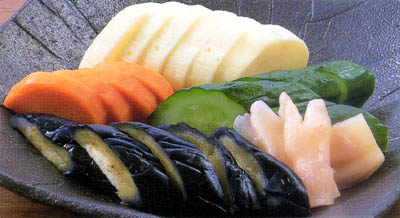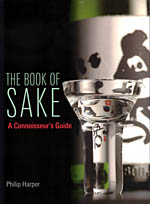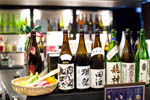Otsumami and sakana
Certain foods are strongly associated with drinking and are often known as otsumami. This is an honorific formed from the verb tsumamu, to pick something up by the fingertips (or chopsticks). Another expression for food specifically intended as an accompaniment to sake is sakana. Below are a few of the bits and pieces to be found at the elbow of drinkers in Japan - sakana every sake fan should try at least once.

Chinmi Delicacies
At the top of the nibbler's hierarchy are the mysteriously named chinmi, written with characters meaning rare and taste, which pretty much conveys the idea. Every possible genre in Japan, from views and gardens to blue cheese and brewers' unions, has its official top-three ranking and these delicacies are no exception. The Three Great Delicacies, as established by the consensus of connoisseurs of the Edo period (1600-1868), are uni, karasumi, and konowata.
The first and most common is sea urchin, a popular (although rather expensive) topping for sushi. Karasumi is mullet roe, salted and preserved by drying. It is usually served thinly sliced, and looks unspectacular, but its rich, subtle flavor is superb. It may be served as is, or lightly grilled, in which case the flavor takes on an aromatic, toasty, extra dimension. The third of the great trio is konowata, which is a crunchy variety of shiokara (see next entry) prepared from the entrails of the sea slug. Really.
Shiokara: Salt-Pickled Thingummies
Fish, shellfish, and various bits of their insides are the most common ingredients. The various salty bits and pieces come in a range of slime-creature colors and textures. The most common version is the pinkish one made from squid, called ika no shiokara. One of the foods traditionally loathed by Western visitors, these delicacies are certainly an acquired taste. I have been told that it is the amino acids, which accumulate in the curing process, that make them go so well with sake.
Tsukemono: Japanese Pickles
A wide variety of ingredients are pickled in a number of bases - salt, rice bran (nuka), soy sauce, vinegar, miso, koji, and the caked lees (kasu) left over when sake is pressed. The length of time varies from a few hours for ichiyazuke (one-night pickles), to a few months for vegetables done in salt and rice bran (takuan, made from the daikon radish, is the most popular), and several years for the famous Nara speciality of vegetables (primarily shirorui, a relative of the melon) pickled in sake lees.
With such a range of flavors - from the light touch of ichiyazuke, to the vinegary tang of purple Kyoto shibazuke and the rich years' worth of taste in a slice of narazuke - it is easy to find the perfect companion for the lightest of ginjo or the funkiest of koshu. (See photo above.)
More about sake
Source Notes

Reprinted with permission from the book:
The Book of Sake: A Connoisseur's Guide
Kodansha International
Once found only in sushi bars and Japanese restaurants outside its native land, sake now lines the shelves of our gourmet food shops, liquor stores, supermarkets, and restaurants of all types. And as sake increasingly becomes a part of the way we dine and entertain, people everywhere are looking for guidance in sorting out the confusing and intimidating array of choices available.
In The Book of Sake, brew master Philip Harper provides all the information anyone needs to discover the many pleasures of Japan's national tipple. Harper also introduces tidbits of sake lore (as only an insider can), a groundbreaking new tasting chart, and a selection of sakes for all palates and pocketbooks by the esteemed sake journalist Haruo Matsuzaki.
ISBN4-7700-2998-0
- Order this book from amazon.com
- Order this book from amazon.co.jp (in Japan)
- Find this book at your local English-language bookstore in Japan
- Or use the ISBN to order from your local bookstore.
More about sake
- © Copyright Lobster Enterprises
- Privacy
- Bento.com top
- © Copyright Lobster Enterprises
- Privacy
- Bento.com top
- © Copyright Lobster Enterprises
- Privacy
- Bento.com top








